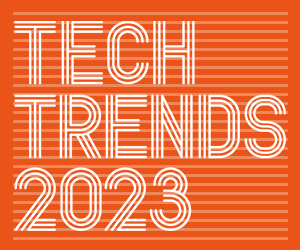Throughout 2022, nonprofits began the slow process of moving past the pandemic. However, as was the case in many other industries, new challenges emerged, particularly the Great Resignation. A study from Nonprofit HR found that nearly half of nonprofits struggled to keep entry-level staff, and 40 percent were challenged to retain midlevel employees.
Staffing challenges may wane in 2023, but indicators suggest difficulties may arise on the fundraising front. While total dollars donated to charity increased in the first half of 2022, according to the Fundraising Effectiveness Project, donor retention is down, particularly among bread-and-butter small donors. As a result, technology may be asked to do more this year to fill in the gaps, protect existing resources and uncover new opportunities that might be hiding in the data. Here are a few trends to watch.
READ: The most important non-profit influencers worth following.
1. The Rise of Low-Code and No-Code Tools
If you’ve heard it once, you’ve heard it a million times: For nonprofits, efficiency is paramount. While conversations about overhead have tended to favor a less-strict approach in recent years, nonprofits must do more to reach donors and fulfill their missions with limited budgets.
Low-code and no-code tools, which enable nontechnical employees to develop software applications on their own, are one solution to the challenge of doing more with less. Low-code and no-code tools can let nonprofits manage in-house what otherwise might require a lengthy development process and the hiring of outside programmers.
“Many non-profit organizations contract external service providers to develop and maintain their public-facing services and resources website,” explains Brian Perron, a social work professor at the University of Michigan, in a post on Medium. “With no-code tools, non-profit organizations can now independently develop and maintain professional websites at a fraction of the cost of contracted services.”
But while there is much potential for improving workforce efficiency through code-light platforms, uptake is still tentative. 2023 could change that, in part because the flexibility enabled by cloud solutions is becoming increasingly attractive. As noted by Google, a good example is the work that many nongovernmental organizations did to quickly develop COVID-19 solutions using its no-code development tool AppSheet.













